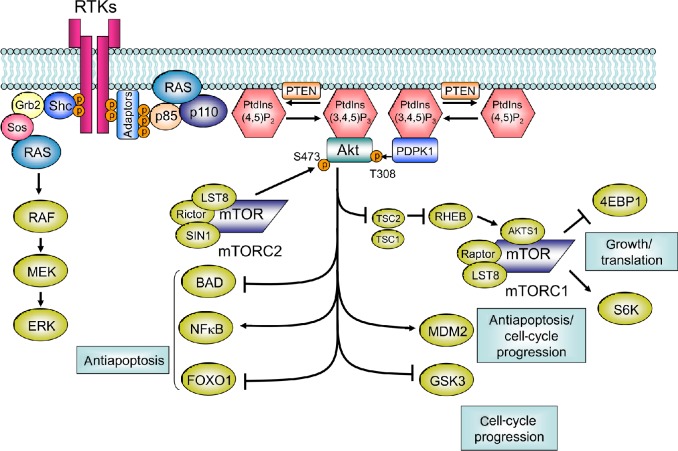Figure 2.
Class I PI3K pathway. RTK activation allows p85 to interact with RTK directly or via adaptor proteins, which recruits PI3K to the membrane. On the cell membrane, inhibitory regulation of p85 to 110 is canceled, and PI3K becomes active as a kinase. Subsequently, PI3K catalyzes the conversion of PIP2 to PIP3. PTEN catalyzes the conversion of PIP3 to PIP2. PIP3 is further recognized by AKT and PDPK1. The connection of PIP3 to PDPK1 and AKT allows the physical interaction of PDPK1 and AKT, which leads to activation of AKT by phosphorylation of the T308 residue. For maximal activation of AKT, phosphorylation of the S473 residue by mTORC2 is required. AKT phosphorylates GSK3, FOXO1, MDM2, BIM, and BAD. AKT also phosphorylates and inactivates TSC2, which subsequently allows RHEB to activate mTORC1.

